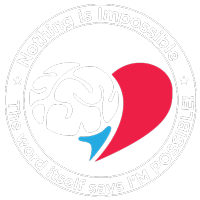Effectively Working with Emotions
Ever wondered why talk therapy helps, but not quite as you expected it to?
Today, we delve into the realm of emotions and uncover the key to working effectively with them so that you may experience deep change in your emotional state.
To do this, it is first of all crucial to recognise that our emotions originate from a profound source – our unconscious mind and today we’ll explore the significance of the unconscious mind in managing, and even resolving emotions, and why mere cognitive approaches all too often fall short.
Understanding the Source of your emotions as well as cause of your symptoms
Our emotions are not products of our cognitive mind; rather, they emanate from the depths of our unconscious. This deeper part of the mind, which workings are often completely out of our awareness, plays a pivotal role in shaping our emotional landscape.
The Pitfall of Cognitive-Only Approaches
Commonly, individuals seek help for their emotional well-being through cognitive-based methods. Whether in counseling sessions, mental health consultations all the way through a myriad of types of therapies, the focus is often on talking through issues, and while this can provide valuable insights into the origins and technicalities of defense mechanisms and behavioural patterns, it primarily engages the cognitive mind, once again leaving the unconscious mind, the source of your issues, completely in the darkness and as such incapable of resolving your symptoms. Understanding the “why” and “how” of your emotions might bring relief, but it’s only part of the equation.
The Importance of Visualization
To truly work effectively with your emotions, it’s imperative to start addressing those very emotions that reside in the feeling part of the mind and in order to do so a shift towards working directly with your unconscious mind is essential. Purely cognitive strategies fall short, and herein lies the power of visualisation. Visualisation engages your unconscious mind, tapping into its dual role as the seat of emotions and imagination.
When using techniques to manage emotions, incorporating visualisation becomes essential. The unconscious mind responds powerfully to images and symbols more than to language, simply because language is a purely cognitive task. For instance, envisioning your emotions, assigning them colours and shapes, forms a bridge between the cognitive and unconscious realms. This process transforms abstract feelings into tangible representations which are then easier to shift and dissipate or even resolve.
The Unconscious Mind: Seat of Emotions and Imagination
Being the unconscious mind not only the source of emotions but also the source of imagination mere verbalization may not be enough to experience long lasting results in the way we feel, but when visualization is incorporated, a profound connection is established, thus techniques involving visualising emotions and even visualising the process of the technique, empower individuals to navigate their emotional landscape effectively.
Guaranteed Effectiveness
You may be still skeptical of the effectiveness of visualization, but you can try for yourself simply visualising breathing in a relaxing breath and breathing out all tension for 10-20 consecutive breaths (colours and texture of these will naturally be quite different, but not necessarily) and feel the difference!
Techniques involving visual representation of emotions, combined with thoughtful practices, can lead to significant emotional shifts, and the ease of integrating visualization into these practices makes it accessible to anyone willing to embark on the journey of emotional mastery.
Conclusion
In conclusion, understanding the source of your emotions is the first step towards effective emotional management. By acknowledging the role of the unconscious mind and incorporating visualisation into your strategies, you open doors to a realm of possibilities for emotional well-being.
So, the next time you find yourself grappling with emotions, remember to engage your unconscious mind through visualisation and be creative with it, I’m sure the results will surprise you!




Leave a Reply